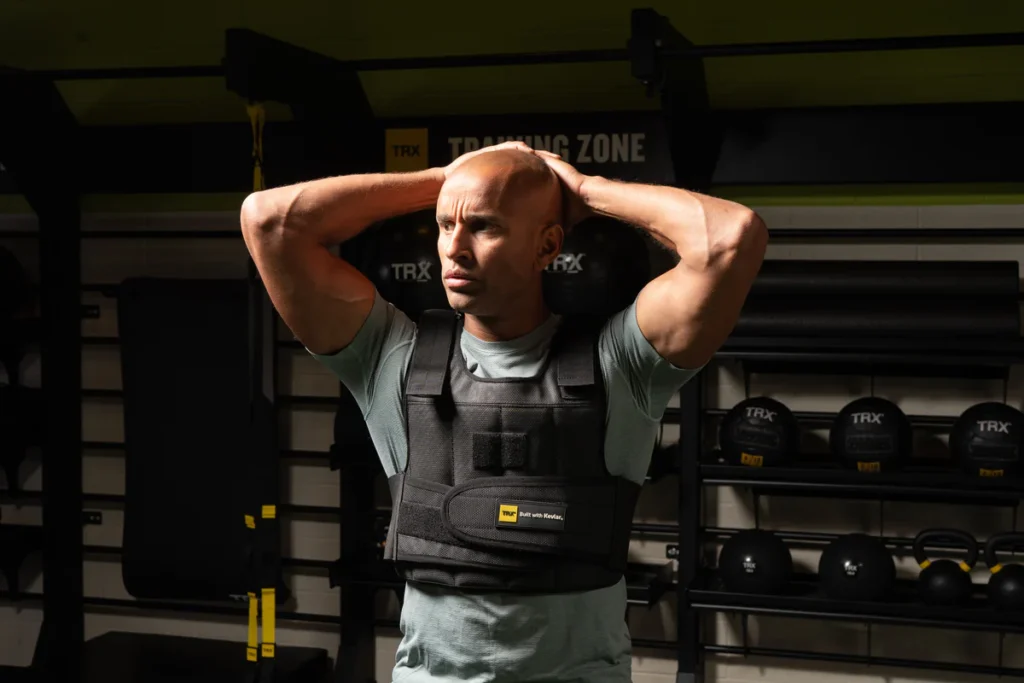Daily Training with a Weighted Vest: How to Structure Your Workouts for Balanced Intensity

A weighted vest is one of the most adaptable tools for bodyweight training, cardio enhancement, and progressive resistance. By simply adding weight to your body, you can increase workout intensity, build endurance, and strengthen core and postural muscles—without needing complex gym equipment.
But as with any form of resistance training, knowing how to structure your workouts with a weighted vest is essential for progress and injury prevention. Whether you’re a beginner seeking a light cardio boost or an experienced athlete aiming to enhance running performance, this guide will walk you through how to plan your weekly routine using a weighted vest, including how to manage intensity and recovery.
Why Train with a Weighted Vest?
A weighted vest adds resistance directly to your body, forcing your muscles and cardiovascular system to work harder during movement. The extra weight increases the metabolic demand of activities like walking, jogging, squats, and push-ups.
General Benefits
- Increased calorie burn due to added load.
- Improved muscular endurance, especially in legs and core.
- Greater bone density stimulation from weight-bearing movement.
- Cardiovascular conditioning in both aerobic and anaerobic zones.
- Postural strength from carrying balanced weight over time.
For those looking to add variety to their home workouts or take their outdoor training to the next level, using an adjustable weighted vest offers flexibility and challenge.
Weighted Vest for Different Users
Weighted Vest for Women
There is growing interest in the weighted vest for women, especially among those pursuing at-home fitness, walking routines, or postpartum strength rebuilding. A women-friendly design typically includes a snug, contoured fit with padding around the shoulders and chest, plus the ability to start with lower weights (e.g., 4–10 lbs) and gradually increase as strength builds.
Weighted Vest for Running
For more advanced users, a weighted vest for running introduces a new layer of cardiovascular and muscular difficulty. It challenges the body’s gait and respiratory system but should be approached carefully, as the impact forces during running are significantly higher than walking or calisthenics.
How to Choose the Right Adjustable Weighted Vest
Before starting any plan, it’s important to select a vest that meets your training goals and body type.
Key Features to Look For:
- Weight adjustability (5–30 lbs depending on your level)
- Even distribution of weight across front and back
- Comfortable fit with adjustable straps
- Breathable fabric for longer sessions
- Compact design for natural movement
An adjustable weighted vest allows for progression over time, which is critical for both safety and long-term results.
How to Structure a Weekly Training Plan with a Weighted Vest
Building a training schedule around a weighted vest depends on three main factors:
- Your current fitness level
- Your primary goals (cardio, strength, endurance, weight loss)
- How much time you can train per week
Here’s a flexible 7-day plan you can adapt to your needs.
Day 1: Core & Stability Training (20–30 mins)
Objective: Build foundational strength with slow, controlled movements.
Sample Workout (using 5–10 lbs weighted vest):
- Weighted Plank Hold – 3 sets of 30 seconds
- Bodyweight Squats – 3 x 12 reps
- Bird Dog (with vest) – 3 x 10 reps per side
- Standing Calf Raises – 3 x 15 reps
- Side Plank – 2 x 30 seconds each side
Tip: Keep movements controlled and focus on posture. Avoid heavy loads on the first day to prevent fatigue early in the week.
Day 2: Weighted Walking (Low-Intensity Cardio – 45 mins)
Objective: Build aerobic base and joint-friendly endurance.
Method: Use a light weighted vest (4–10 lbs). Walk at a brisk but conversational pace.
Options:
- City or trail walking
- Incline treadmill walk
- Outdoor loop with varied terrain
Why It Works: Walking with a weighted vest increases calorie burn without stressing joints, making it ideal for active recovery or daily movement.
Day 3: Strength Training (Full Body – 30 mins)
Objective: Use compound movements for muscle conditioning.
Sample Workout (8–20 lbs vest depending on experience):
- Push-Ups (vest on) – 4 x 8-10
- Step-Ups (on bench or stairs) – 3 x 12 each leg
- Pull-Ups or Rows (if equipment available) – 3 x 6-8
- Walking Lunges – 3 x 10 each leg
- Glute Bridges – 3 x 12
Adjust Intensity: If bodyweight exercises are too difficult with the vest, reduce weight or perform without.
Day 4: Rest or Light Activity (No Vest)
Purpose: Let your body recover. Go for a light walk, do yoga, or foam roll. Recovery enhances results and reduces injury risk.
Day 5: Weighted Running Intervals (High-Intensity Cardio – 20 mins)
Objective: Build cardiovascular endurance and running efficiency.
Method:
- Warm-up jog (no vest) – 5 minutes
- Add weighted vest for running (5–8 lbs max)
- Run 30 seconds at 80% effort, walk 90 seconds
- Repeat 6–8 rounds
- Cool down walk – 5 minutes
Caution: Keep vest light. Proper form is critical. Avoid heavy weights which may impact knees or hips during running.
Day 6: Upper Body Calisthenics (20–25 mins)
Objective: Use vest to challenge upper-body movements.
Sample Routine:
- Incline Push-Ups – 3 x 10–12
- Chair Dips – 3 x 10
- Weighted Arm Circles – 2 mins total
- Shadow Boxing with Vest – 3 rounds of 1 minute
Add Variety: Resistance bands can also be included if desired.
Day 7: Active Recovery – Weighted Hike or Incline Walk (45–60 mins)
Objective: Stimulate endurance while staying under max effort.
Method: Choose a route with gradual hills or incline treadmill. Keep a steady pace and focus on deep breathing.
Progressive Overload with a Weighted Vest
To see results over time, you’ll want to gradually increase the challenge.
Ways to Progress:
- Add 1–2 lbs every 1–2 weeks
- Extend session time by 5–10 minutes
- Increase reps or sets
- Add new exercises (stairs, sprints, etc.)
Don’t rush. Let your body adapt before increasing load or intensity. Most people will benefit from staying at lighter weights for the first month.
Recovery and Safety Tips
Training with a weighted vest is effective, but recovery is just as important as effort.
Recovery Tips:
- Hydrate properly before and after sessions
- Stretch your shoulders and upper back to offset vest pressure
- Take one full rest day per week
- Listen to your body—joint discomfort is a sign to reduce load
- Use padded or ergonomic vests to prevent strain on traps and spine
Realistic Goals to Track
Using a weighted vest consistently can lead to measurable progress.
Sample Goals:
- Walk 10,000 steps/day with a 10-lb vest within 4 weeks
- Perform 20 push-ups with 10 lbs added in 6 weeks
- Jog 1 mile with a 5-lb vest without walking breaks
- Reduce resting heart rate or improve aerobic pace over 1 month
Tracking progress (using apps, journals, or wearables) helps maintain motivation and accountability.
Conclusion: Balance, Progression, and Practicality
A weighted vest is a simple yet highly effective training tool. It can enhance cardio sessions, bodyweight strength routines, and endurance training—when used correctly. With an adjustable weighted vest, you gain flexibility to scale workouts to your ability, goals, and schedule.
Whether you’re walking, running, or training with calisthenics, the key to success lies in balance and gradual progression. Start light, build consistency, and keep your focus on functional improvement—not just intensity for intensity’s sake.
With the right plan and mindset, daily training with a weighted vest can lead to sustainable fitness and improved performance over time.




